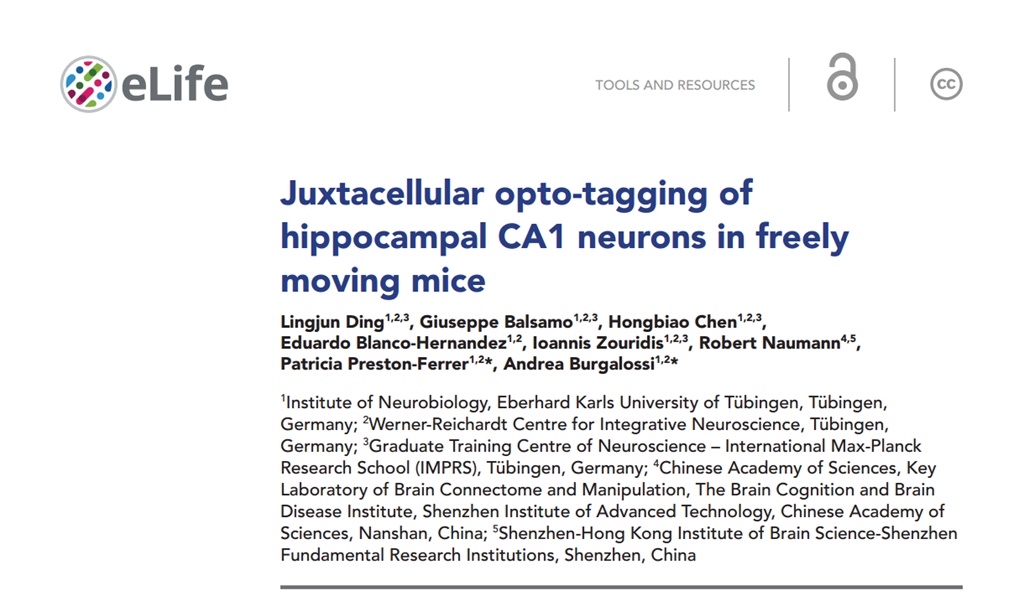- Lingjun Ding1,2,3, Giuseppe Balsamo1,2,3, Hongbiao Chen1,2,3, Eduardo Blanco-Hernandez1,2, Ioannis Zouridis1,2,3, Robert Naumann4,5, Patricia Preston-Ferrer1,2, Andrea Burgalossi1,2
- Date: January 06, 2022
- Institute of Neurobiology, Eberhard Karls University of Tübingen, Tübingen, Germany;
- Werner-Reichardt Centre for Integrative Neuroscience, Tübingen, Germany;
- Graduate Training Centre of Neuroscience – International Max-Planck Research School (IMPRS), Tübingen, Germany;
- Chinese Academy of Sciences, Key Laboratory of Brain Connectome and Manipulation, The Brain Cognition and Brain Disease Institute, Shenzhen Institute of Advanced Technology, Chinese Academy of Sciences, Nanshan, China;
- Shenzhen-Hong Kong Institute of Brain Science-Shenzhen Fundamental Research Institutions, Shenzhen, China
Download

manuscript pdf coming soon…
Abstract
Editor’s evaluation
This study presents a major technical advance by recording from genetically identifed neurons in freely moving mice. This method is applied to the hippocampus to determine circuit specifc synaptic interaction in vivo and to compare behavioral correlates of genetically-defned cell types. This technique paves the way for future studies aiming to relate genetics, circuits, and neuronal coding in freely moving animals.
Acknowledgments
Loading more memories in Burgalossi’s lab…